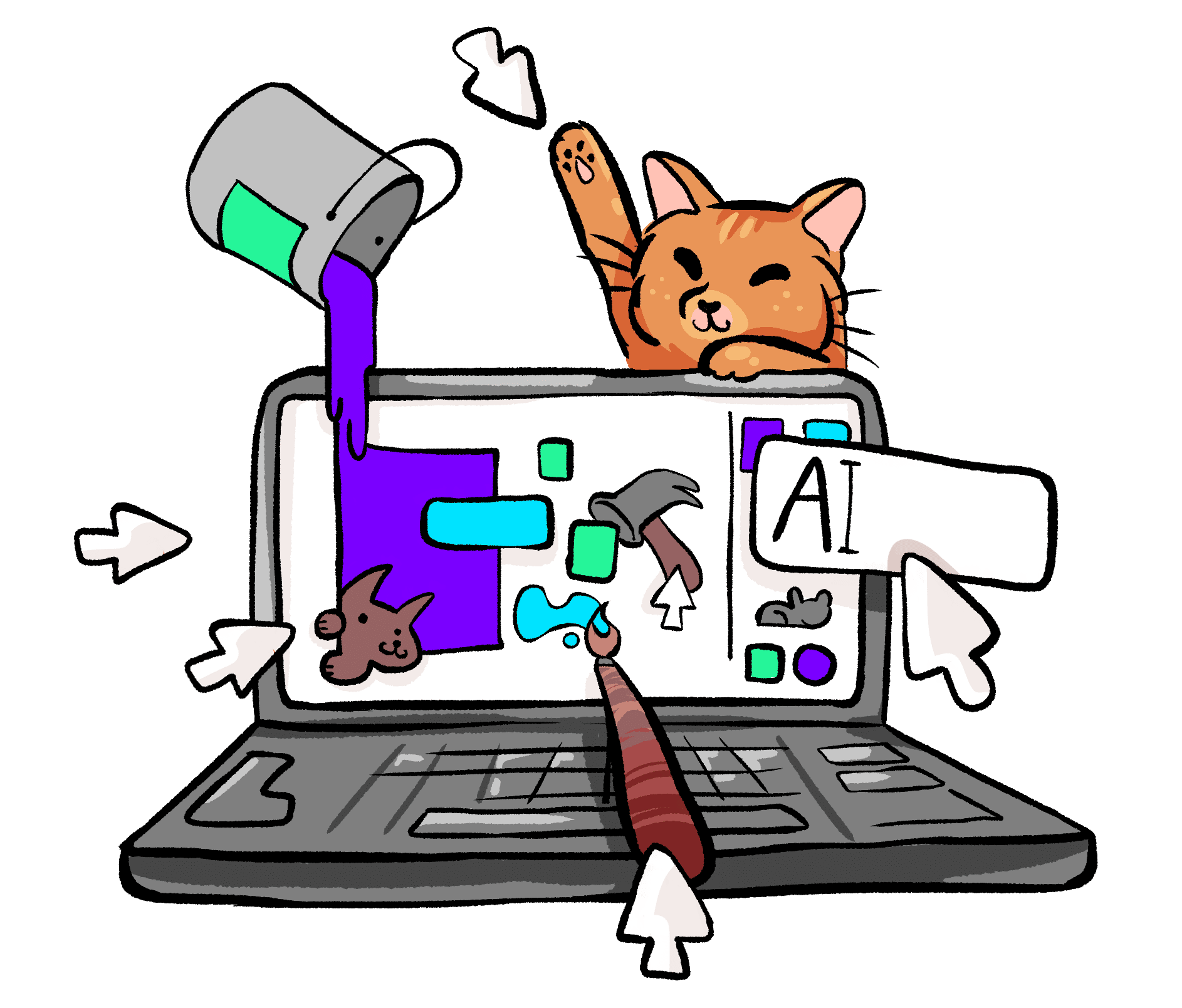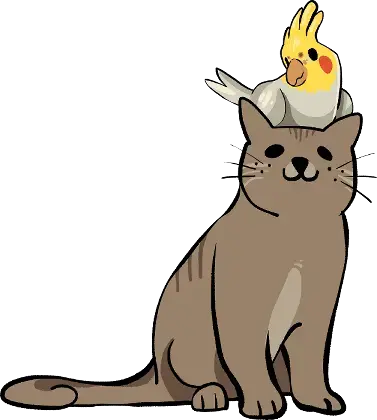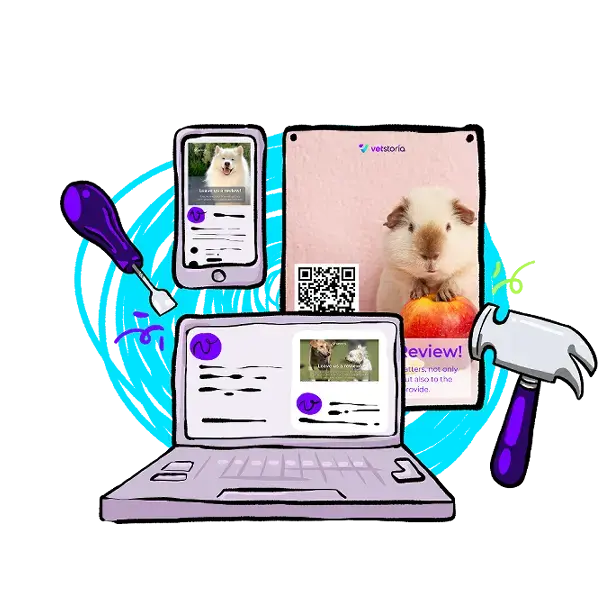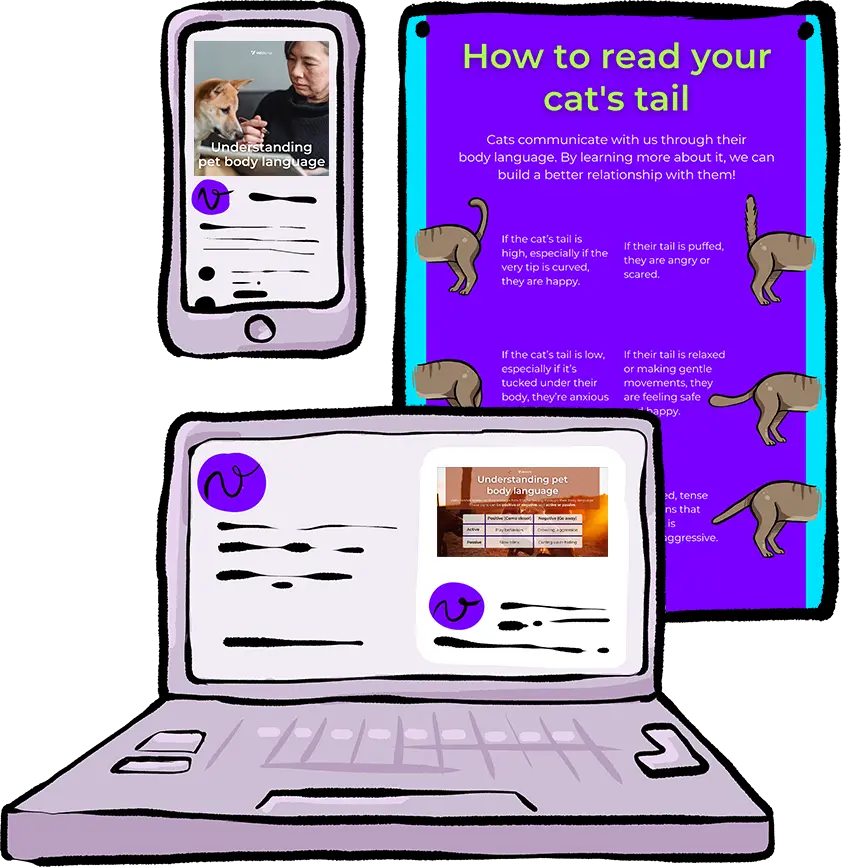Teach pet owners how to understand their pet’s body language
This content pack helps you teach pet owners how to understand their pet’s body language, and encourages them to book an appointment with you if their pet starts to behave differently than usual. These packs are completely editable, and to save you even more time, we’ve included a pre-written email, and suggested captions for each of our social media templates.
Download our ready-to-use social assets:
Or brand the content for your clinic in 3 easy steps

Choose the pack you want, and open the clickable template links

Export the design as it is, or add your logo, brand colors, and update the text

Download the design for your digital channels, or print physical copies!
Customize the assets as you like:
What information is included in the pet body language pack?
Body language signs are never 100% guaranteed. A dog wagging their tail doesn’t always mean they’re happy – they might be angry or agitated. Before you come to any conclusions based on this guide, ask yourself these questions…
- Is your pet in a familiar or unfamiliar environment? Pets might act more curious or fearful in an unfamiliar environment.
- Is your pet with friends or strangers? Are there other animals around? Your pet’s behavior and body language will change when they are interacting with people or other pets.
- What is your pet’s usual response to this environment or stimulus? Your pet’s personality will affect how they behave and act in different situations.
- Is your pet sick or injured? This will influence your pet’s body language. If there are any unexplained changes in your pet’s behavior, it might be a sign of illness.
Your pet’s body language can be positive (meaning they like something) or negative (meaning they dislike something). It can also be active (high-energy) or passive (low energy). For example, a playful pet will be active + positive, while an angry pet will act active + negative.
Cats express their intentions through the movement and position of their body, ears, tail, and eyes.
The most expressive part of a cat’s body language is their tail. A cat’s tail can help you identify their mood based on its position and its movement.
- If the cat’s tail is high, this is likely to indicate a positive mood, especially if the very tip is curved. For example, when you arrive home and they come to greet you.
- If the cat’s tail is low, they’re likely to be anxious or afraid. Especially if it’s tucked under their body. Remove possible negative stimuli, and provide your cat with a safe place to hide to avoid this in the future.
- If the cat’s tail is flicking (making small but quick movements) or wagging, this usually means they are annoyed or angry. Give them space!
- If their tail is puffed, they are angry or scared and are trying to make themselves look bigger and more dangerous. Give them space!
- If their tail is relaxed or making gentle movements, they are likely feeling safe and relaxed.
A cat’s eyes can be very expressive. Cats don’t have many facial muscles, so you should focus on their eyelids and on their pupils.
- If your cat’s pupils are enlarged, this means your cat is in a high-energy state. It can also simply mean there isn’t enough light in the room!
- Wide-open eyes are a sign your cat is in a high-energy state. They are alert! This can mean your cat is anxious or angry, but it can also be a hunting behavior if your cat is playing.
- Semi-closed eyes mean your cat is relaxed, in a low-energy state.
- Slow-blinks are a sure sign your cat is feeling safe! If your cat looks at you and slow blinks, they are showing that they trust you. It’s common courtesy to do it back to them!
A cat’s ears can swivel in response to sound, but also to emotion.
- If your cat’s ears are erect, straight up, this means your cat is alert.
- If your cat’s ears are relaxed, up on their head and pointing forward, this means your cat is comfortable.
- But if your cat’s ears are flattened against their head, pushed to the sides, this means your cat is stressed or anxious, and trying to make themselves look smaller. Give them space and a place to hide.
A cat’s overall body position can tell you a lot about how they are feeling. They tend to face the direction they want to go.
- If your cat is facing you straight, that means they’re confident and want to be fussed over! Please pat their head 🙂
- If your cat is facing away, body turned, your cat is uncomfortable and wants to be able to leave quickly. Remove the stimulus causing this, and provide your cat with a place to hide.
- If your cat has their back arched up, they’re anxious or aggressive. They’re trying to make themselves look bigger. This is usually accompanied by showing teeth, hissing, or even having one front paw raised (to attack).
- If your cat is making themselves small, curling up and retreating, this means they’re stressed or afraid. Especially if they seem attentive (big eyes, looking around. Usually ears flattened down.) Anxious cats like to hide, so ensure they have shelter.
- If your cat is laying down, rolled to one side, looking at a threat and tensed up, this means they are angry and aggressive. This might be accompanied by hissing, showing teeth, and having their claws out.
There are other body language signs that cats use to communicate.
- If your cat is licking their nose or lips, this can mean they are stressed. It can also happen after eating, or if your cat is feeling a bit sick.
- If your cat is yawning, this might mean they’re relaxed. They want to show they’re not a threat. It can also happen if they are tired or have just woken up, like it does with people.
Our Content Pack Calendar has all the marketing assets you need for the rest of the year neatly mapped onto a calendar. It’s been specially designed to help you have the most engaging, productive, and profitable quarter yet for your veterinary clinic. Download 2023 Q4 calendar here!

Get Vetstoria Content Packs direct to your Inbox
Vetstoria users get more, with online booking links and QR codes

Build online booking campaigns
Create promotional booking campaigns (like free dental check ups!) that follow set scheduling rules based on your preferred dates, the availability of vets, and more!

Add trackable booking links and QR codes
Use trackable links in emails, SMS, social profiles, online ads and in the clinic to promote your campaigns and easily measure the results.

Use analytics to optimize results
See how many appointments and new clients are generated from each campaign, and learn which channels are most effective.

Build online booking campaigns
Create promotional booking campaigns that follow set scheduling rules based on preferred dates, the availability of vets, and more!

Add booking links to digital channels
Use trackable booking links in emails, SMS, social profiles, and online ads to promote your campaigns and easily measure the results.

Use analytics to optimize results
See how many appointments and new clients are generated from each campaign, and learn which channels are most effective.


